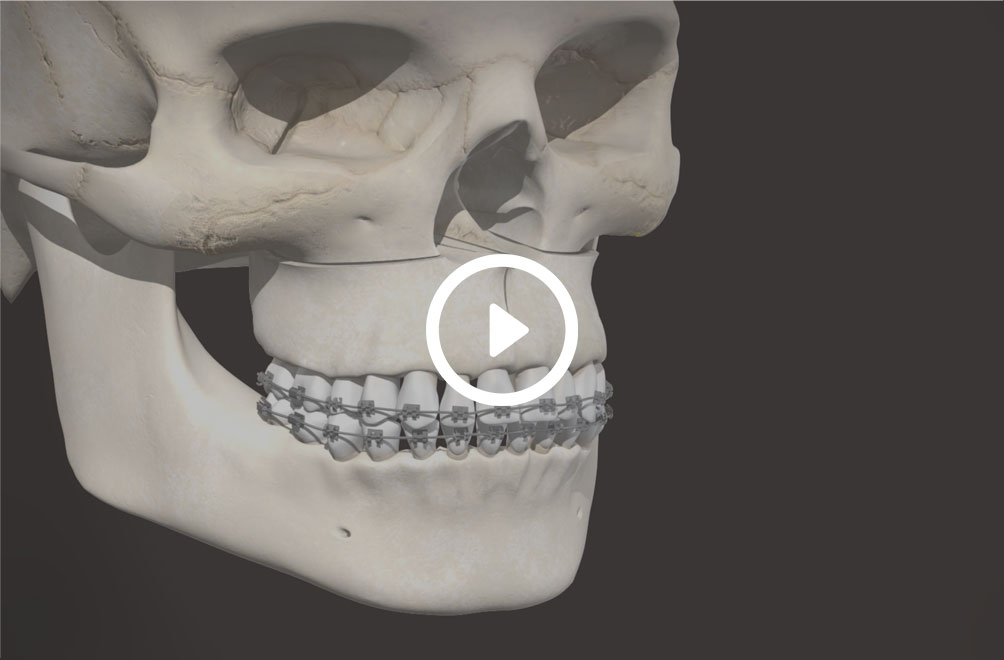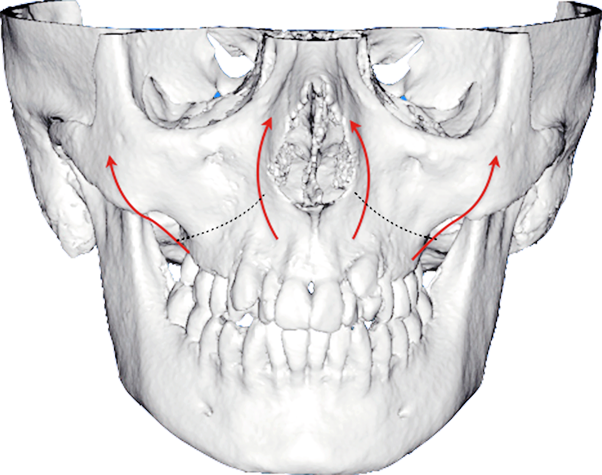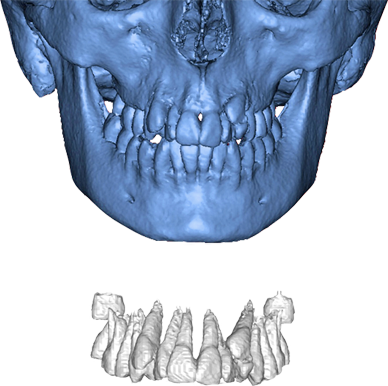Narrow upper and lower jaw
Surgical palatal expansion (SPE) for the widening of the upper jaw Mandibular split osteotomy (lower jaw distraction) for expansion of the lower jaw

People with a smaller upper jaw often have very crooked teeth. This makes oral hygiene more challenging and strains your jaw. Jaw, head and neck pain are common consequences of this. An upper jaw that is too small is often associated with a flat midface and a retrusive upper jaw. Those affected often snore as nasal breathing is obstructed.
 Upper jaw appliances
Upper jaw appliances Expansion allows the upper jaw to widen. This procedure is largely pain-free and is carried out with the help of an appliance that sits firmly in your mouth. Before we do this, the jawbone is slightly weakened through a small incision in the oral vestibule.
 Courtesy of Dr. Esnault (Paris)
Courtesy of Dr. Esnault (Paris)

Rapid Palatal Expansion (RPE) is a safe procedure targeting crowding. It creates room in the upper jaw without having to remove healthy teeth.
The orthodontist inserts the expansion appliance before surgery. The procedure (duration of 30 min) is carried out while the patient is under general anesthesia. The surgeon performs the procedure exclusively via the oral cavity to avoid external scars. The four maxillary buttresses are then weakened in order to allow the expansion (distraction) of the upper jawbone. This procedure enables the build-up of bones and creates more room in the upper jaw. Directly after this surgery, you will notice a small gap between your upper front teeth. This gap will continue widening during the expansion phase until an orthodontist closes it.
The inpatient stay is limited to one day, and the first follow-up examination usually takes place one week later. The expansion appliance stays in place for four months (depending on the extent of crowding).

During the expansion process (1 week post op), you will have to turn the expansion appliance (1x morning, 1x night). This procedure is pain-free. The orthodontist will carry out regular check-ups in consultation with our team. Sick leave is limited to approx. one week.
Please do not hesitate to contact our team if you have any questions.

